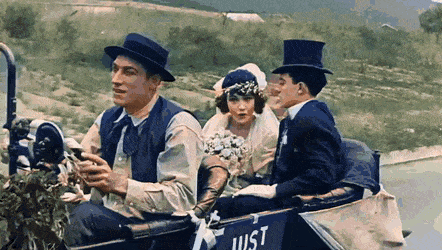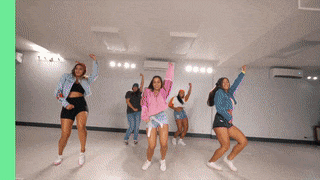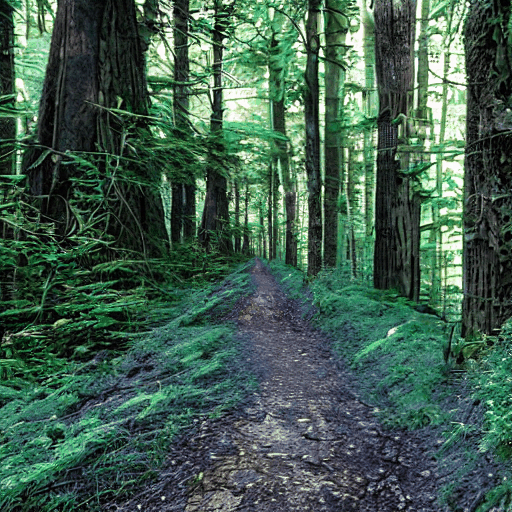deoldify_video
Maintainer: arielreplicate

4

| Property | Value |
|---|---|
| Run this model | Run on Replicate |
| API spec | View on Replicate |
| Github link | View on Github |
| Paper link | No paper link provided |
Create account to get full access
Model overview
The deoldify_video model is a deep learning-based video colorization model developed by Ariel Replicate, the maintainer of this project. It builds upon the open-source DeOldify project, which aims to colorize and restore old images and film footage. The deoldify_video model is specifically optimized for stable, consistent, and flicker-free video colorization.
The deoldify_video model is one of three DeOldify models available, along with the "artistic" and "stable" image colorization models. Each model has its own strengths and use cases - the video model prioritizes stability and consistency over maximum vibrance, making it well-suited for colorizing old film footage.
Model inputs and outputs
Inputs
- input_video: The path to a video file to be colorized.
- render_factor: An integer that determines the resolution at which the color portion of the image is rendered. Lower values will render faster but may result in less detailed colorization, while higher values can produce more vibrant colors but take longer to process.
Outputs
- Output: The path to the colorized video output.
Capabilities
The deoldify_video model is capable of adding realistic color to old black-and-white video footage while maintaining a high degree of stability and consistency. Unlike the previous version of DeOldify, this model is able to produce colorized videos with minimal flickering or artifacts, making it well-suited for processing historical footage.
The model has been trained using a novel "NoGAN" technique, which combines the benefits of Generative Adversarial Network (GAN) training with more conventional methods to achieve high-quality results efficiently. This approach helps to eliminate many of the common issues associated with GAN-based colorization, such as inconsistent coloration and visual artifacts.
What can I use it for?
The deoldify_video model can be used to breathe new life into old black-and-white films and footage, making them more engaging and accessible to modern audiences. This could be particularly useful for historical documentaries, educational materials, or personal archival projects.
By colorizing old video, the deoldify_video model can help preserve and showcase cultural heritage, enabling viewers to better connect with the people and events depicted. The consistent and stable colorization results make it suitable for professional-quality video productions.
Things to try
One interesting aspect of the DeOldify project is the way the models seem to arrive at consistent colorization decisions, even for seemingly arbitrary details like clothing and special effects. This suggests the models are learning underlying rules about how to colorize based on subtle cues in the black-and-white footage.
When using the deoldify_video model, you can experiment with adjusting the render_factor parameter to find the sweet spot between speed and quality for your particular use case. Higher render factors can produce more detailed and vibrant results, but may take longer to process.
Additionally, the maintainer notes that using a ResNet101 backbone for the generator network, rather than the smaller ResNet34, can help improve the consistency of skin tones and other key details in the colorized output.
This summary was produced with help from an AI and may contain inaccuracies - check out the links to read the original source documents!
Related Models

deoldify_image

398
The deoldify_image model from maintainer arielreplicate is a deep learning-based AI model that can add color to old black-and-white images. It builds upon techniques like Self-Attention Generative Adversarial Network and Two Time-Scale Update Rule, and introduces a novel "NoGAN" training approach to achieve high-quality, stable colorization results. The model is part of the DeOldify project, which aims to colorize and restore old images and film footage. It offers three variants - "Artistic", "Stable", and "Video" - each optimized for different use cases. The Artistic model produces the most vibrant colors but may leave important parts of the image gray, while the Stable model is better suited for natural scenes and less prone to leaving gray human parts. The Video model is optimized for smooth, consistent and flicker-free video colorization. Model inputs and outputs Inputs model_name**: Specifies which model to use - "Artistic", "Stable", or "Video" input_image**: The path to the black-and-white image to be colorized render_factor**: Determines the resolution at which the color portion of the image is rendered. Lower values render faster but may result in less vibrant colors, while higher values can produce more detailed results but may wash out the colors. Outputs The colorized version of the input image, returned as a URI. Capabilities The deoldify_image model can produce high-quality, realistic colorization of old black-and-white images, with impressive results on a wide range of subjects like historical photos, portraits, landscapes, and even old film footage. The use of the "NoGAN" training approach helps to eliminate common issues like flickering, glitches, and inconsistent coloring that plagued earlier colorization models. What can I use it for? The deoldify_image model can be a powerful tool for breathtaking photo restoration and enhancement projects. It could be used to bring historical images to life, add visual interest to old family photos, or even breathe new life into classic black-and-white films. Potential applications include historical archives, photo sharing services, film restoration, and more. Things to try One interesting aspect of the deoldify_image model is that it seems to have learned some underlying "rules" about color based on subtle cues in the black-and-white images, resulting in remarkably consistent and deterministic colorization decisions. This means the model can produce very stable, flicker-free results even when coloring moving scenes in video. Experimenting with different input images, especially ones with unique or challenging elements, could yield fascinating insights into the model's inner workings.
Updated Invalid Date

robust_video_matting

47
The robust_video_matting model is a powerful AI tool designed for robust human video matting. Unlike existing neural models that process frames as independent images, this model uses a recurrent neural network to process videos with temporal memory. This allows it to perform matting in real-time on any videos without additional inputs, achieving impressive speeds of 4K 76FPS and HD 104FPS on an Nvidia GTX 1080 Ti GPU. The robust_video_matting model is similar to other video processing models like deoldify_video, which adds color to old video footage, and video-background-remover, which turns the background of a video into a green screen. However, the robust_video_matting model is specifically designed for robust human video matting, with a focus on high-quality results and real-time performance. Model inputs and outputs The robust_video_matting model takes a video as input and outputs a segmented video with the foreground subject extracted. The model can handle a variety of video formats and resolutions, and provides several output options including the raw alpha prediction, the raw foreground prediction, and a composite video with the subject on a green screen background. Inputs input_video**: The video to segment. Outputs Output**: The segmented video with the foreground subject extracted. Capabilities The robust_video_matting model is capable of extracting the foreground of a video with high accuracy and in real-time. It can handle a wide range of video resolutions and frame rates, and is designed to be robust to various filming conditions and subject types. What can I use it for? The robust_video_matting model can be useful for a variety of video production and post-processing tasks. For example, you could use it to create green screen footage for visual effects, remove the background from video calls or live streams, or isolate subjects for further editing or compositing. The model's real-time performance and high-quality results make it a powerful tool for both professional and amateur video creators. Things to try One interesting thing to try with the robust_video_matting model is to experiment with the downsample_ratio hyperparameter. This parameter allows you to adjust the resolution of the input video, which can affect the model's performance and speed. By trying different values for the downsample_ratio, you can find the best balance between quality and processing speed for your specific use case. Another thing to try is to use the model in combination with other video processing tools, such as frames-to-video or video-to-frames from the Replicate platform. By breaking down a video into individual frames, processing them with the robust_video_matting model, and then re-assembling the frames into a new video, you can create unique visual effects and composites.
Updated Invalid Date

infinite_nature

2
infinite_nature is a model created by arielreplicate that can generate a fly-by scenery video from a single input image. This model is similar to other models like deoldify_video, which can add colors to old video footage, and robust_video_matting, which can extract the foreground of a video. Another related model is deoldify_image, which can add colors to old images. The model was released by Google Research, as indicated by the README in the provided information. Model inputs and outputs infinite_nature takes a single image as input and generates a video output. The video output is a fly-by of the scene depicted in the input image, creating a dynamic and immersive visual experience from a static image. Inputs Input Image**: An image that the model will use to generate the fly-by video. Outputs Output Video**: A video file that depicts a fly-by of the scene in the input image. Capabilities infinite_nature can transform a single image into a dynamic video, adding a sense of motion and exploration to a static scene. This can be useful for creating engaging visuals, such as virtual tours or cinematic experiences, from a single photograph. What can I use it for? The infinite_nature model can be used to create immersive and visually striking content. For example, you could use it to generate virtual tours of landscapes, cities, or architectural spaces by providing a single representative image. This could be beneficial for real estate, tourism, or even educational applications. Additionally, the model could be used to add a sense of movement and dynamism to still images, creating more engaging content for social media, marketing, or multimedia presentations. Things to try One interesting thing to try with infinite_nature is to experiment with different types of input images, such as landscapes, cityscapes, or even abstract art. Observe how the model interprets and translates the visual information into the resulting fly-by video. You could also try adjusting the number of frames generated to see how it affects the pacing and feel of the output. Incorporating infinite_nature into a larger creative project, such as a short film or an interactive experience, could also yield fascinating results.
Updated Invalid Date

stable_diffusion_infinite_zoom

37
stable_diffusion_infinite_zoom is a AI model developed by arielreplicate that uses Runway's Stable-diffusion inpainting model to create an infinite loop video. This model builds upon the capabilities of the Stable Diffusion text-to-image model, which can generate photo-realistic images from text prompts. The stable_diffusion_infinite_zoom model takes this a step further by using the inpainting functionality to create a seamless looping video effect. Model inputs and outputs The stable_diffusion_infinite_zoom model takes a text prompt as input and produces an infinite loop video as output. The prompt can describe the desired scene or content, and the model will generate a video that appears to zoom in on that scene indefinitely. Inputs Prompt**: A text description of the desired scene or content to be generated. Outputs GIF**: An infinite loop GIF video of the generated scene. MP4**: An infinite loop MP4 video of the generated scene. Capabilities The stable_diffusion_infinite_zoom model leverages the powerful text-to-image capabilities of Stable Diffusion to create unique and visually striking infinite loop videos. By using the inpainting functionality, the model can seamlessly stitch together the generated frames to create a continuously zooming effect. This allows for the creation of mesmerizing and hypnotic videos from simple text prompts. What can I use it for? The stable_diffusion_infinite_zoom model can be used to generate unique and captivating visual content for a variety of applications, such as: Social media posts and content Visual art and digital installations Background video loops for websites or presentations Experimental and abstract video projects The ability to create infinite loop videos from text prompts opens up new creative possibilities and can be a valuable tool for artists, designers, and content creators. Things to try One interesting aspect of the stable_diffusion_infinite_zoom model is the ability to experiment with different text prompts and see how they affect the generated video. Try prompts that describe specific scenes, abstract concepts, or even just single words and observe how the model interprets and visualizes them. You can also try adjusting the inpaint_iter parameter to see how it affects the seamlessness of the loop. Another interesting approach could be to use the stable_diffusion_infinite_zoom model in combination with other AI-powered video tools, such as the infinite_nature model, to create even more complex and visually engaging content.
Updated Invalid Date